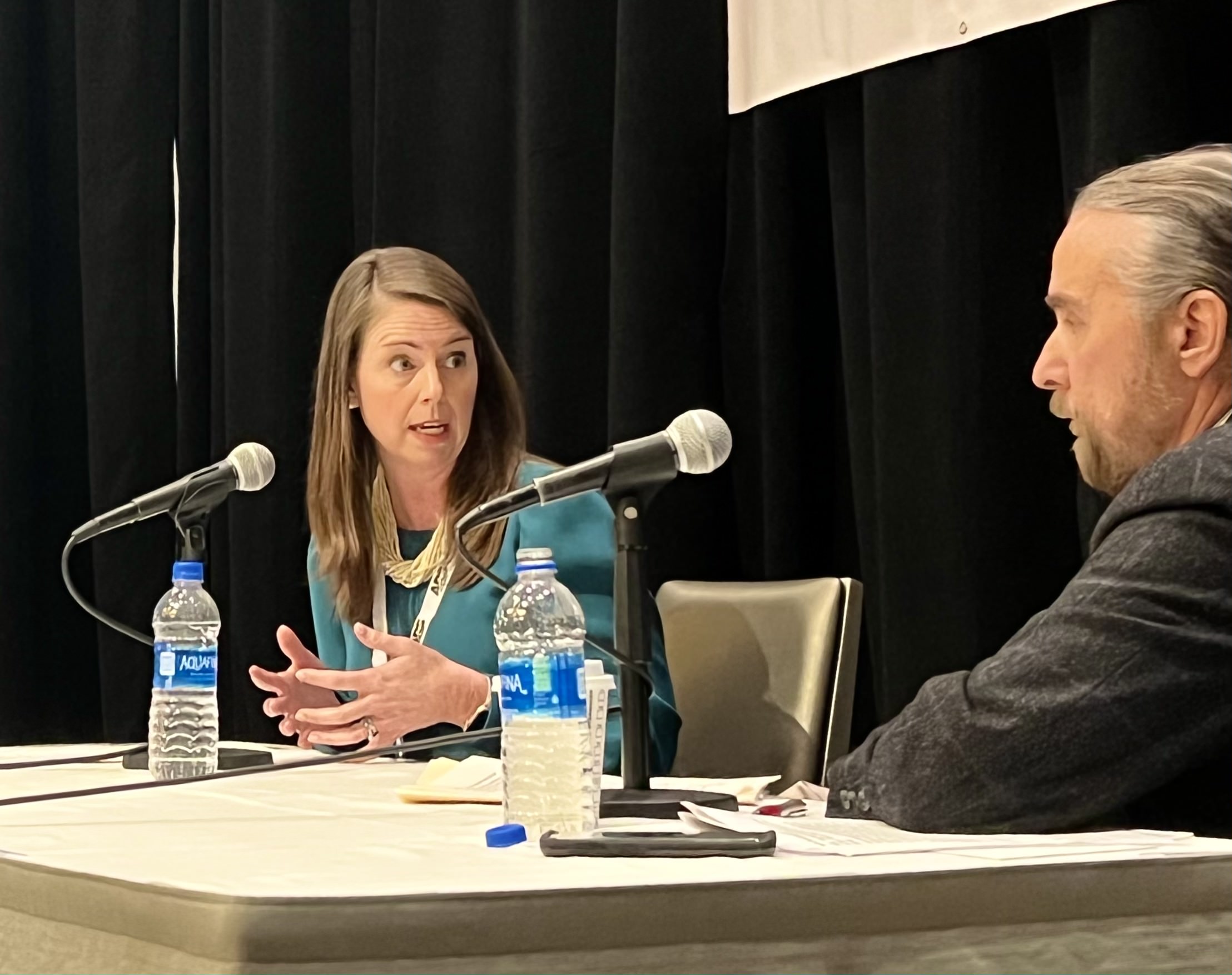Natural Gas Critical to Future Energy Mix Amid Renewable Push, INGAA CEO Says
By Mary Holcomb, Digital Editor
HOUSTON (P&GJ) — Natural gas and related infrastructure will be critical to securing a low-carbon economy and will continue to be a significant contributor to the U.S. long-term energy mix, according to the Interstate Natural Gas Association of America’s (INGAA) President and CEO Amy Andryszak.

“If we continue to stifle natural gas infrastructure investments, not only will we be unable to help our friends and allies and trading partners, but we could see supply shortages in certain parts of this country. We could actually be forced to import more energy from other places,” Andryszak said while speaking to industry professionals Thursday at the Pipeline Opportunities Conference (POC), co-sponsored by INGAA, Pipeline & Gas Journal, SMU’s Maguire Energy Institute and Global Energy Infrastructure.
According to Andryszak, natural gas infrastructure will be critical to the success of lower-carbon fuels that are currently in development, particularly hydrogen.
On the important role natural gas will play in the U.S. economy, Andryszak highlighted the energy crisis happening in Europe as a cautionary tale for the U.S.
“Europe's energy crisis was caused by the fact that Europe's domestic natural gas production has been declining for years, making it more reliant on imports,” she said. “Europe stopped investing in domestic production and decided instead to invest in renewables, which is fine. However, they concurrently chose not to secure long-term contracts for natural gas and instead opted to buy gas on the spot market because they believed that demonstrated that they were moving away from fossil fuels.”
She said the current state of Europe’s energy markets provides a real-time example of what happens when energy infrastructure is not valued by policymakers and when certain fuels are prioritized over having a diverse energy mix.
“The geopolitical realities in global energy markets of today demonstrate the critical need for policies that support continued investment in natural gas infrastructure,” she said. “This infrastructure is needed to enable energy affordability, support net zero goals and strengthen our national security interest.”
The numerous economic and environmental benefits of natural gas make it the ideal foundation for the further use of renewables. However, the new administration under President Joe Biden has obstructed the necessary regulatory environment and framework for natural gas to coincide with renewables, according to Andryszak.
“It seems clear that this administration wants to use the regulatory and permitting mechanisms to actually move the country away from fossil fuels,” she said. “This sends a signal that this administration does not value natural gas infrastructure or seem to want to continue to invest in natural gas infrastructure.”
One major threat to the U.S. natural gas industry was the implementation of the U.S Federal Energy Regulatory Commission’s (FERC) 1999 policy statement on the certification of new interstate natural gas facilities, which has been criticized for failing to clearly describe how FERC considers environmental interests in its decision-making.
While the Commission recently updated its policy statements into draft form, Commissioner Dan Lee noted that FERC has opened a comment period and is expected to issue some form of these new policy statements in the future.
“It appears that FERC seems to be charting a new path of a de facto climate regulator for the entire natural gas sector,” Andryszak said. “The pause on these policy statements really marked a true victory for the natural gas pipeline industry, however, that victory may be short lived.”
Andryszak said the imminent update of FERC policy statements will have a significant impact on the long-term future of the U.S. energy infrastructure, and she urged attendees to advocate for the resource.
“It's critical that all aspects of the natural gas value chain — specifically the customers of natural gas pipelines — engage in these policy statements and express the negative impacts that they will have on natural gas if these end up being formalized,” she said.
The INGAA Foundation is currently evaluating the potential application of hydrogen blending and existing natural gas systems to demonstrate the opportunities for synergy between natural gas and renewable energy.
“This administration has been very vocal about its desire to expand the use of renewable energy, particularly wind and solar,” she said. “While we’re in support of this expansion, we're working hard to ensure the administration recognizes that natural gas is a complement to renewable technologies and that we’re going to need robust natural gas infrastructure to support the renewables to ensure affordability and reliability.”
Related News
Related News

- Kinder Morgan Proposes 290-Mile Gas Pipeline Expansion Spanning Three States
- Valero Plans to Shut California Refinery, Takes $1.1 Billion Hit
- Three Killed, Two Injured in Accident at LNG Construction Site in Texas
- Tallgrass to Build New Permian-to-Rockies Pipeline, Targets 2028 Startup with 2.4 Bcf Capacity
- TC Energy Approves $900 Million Northwoods Pipeline Expansion for U.S. Midwest
- US Poised to Become Net Exporter of Crude Oil in 2023
- EIG’s MidOcean Energy Acquires 20% Stake in Peru LNG, Including 254-Mile Pipeline
- Construction Begins on Ghana's $12 Billion Petroleum Hub, But Not Without Doubts
- Valero Plans to Shut California Refinery, Takes $1.1 Billion Hit
- Newsom Seeks to Aid Struggling Refiners Following Valero’s California Exit




Comments